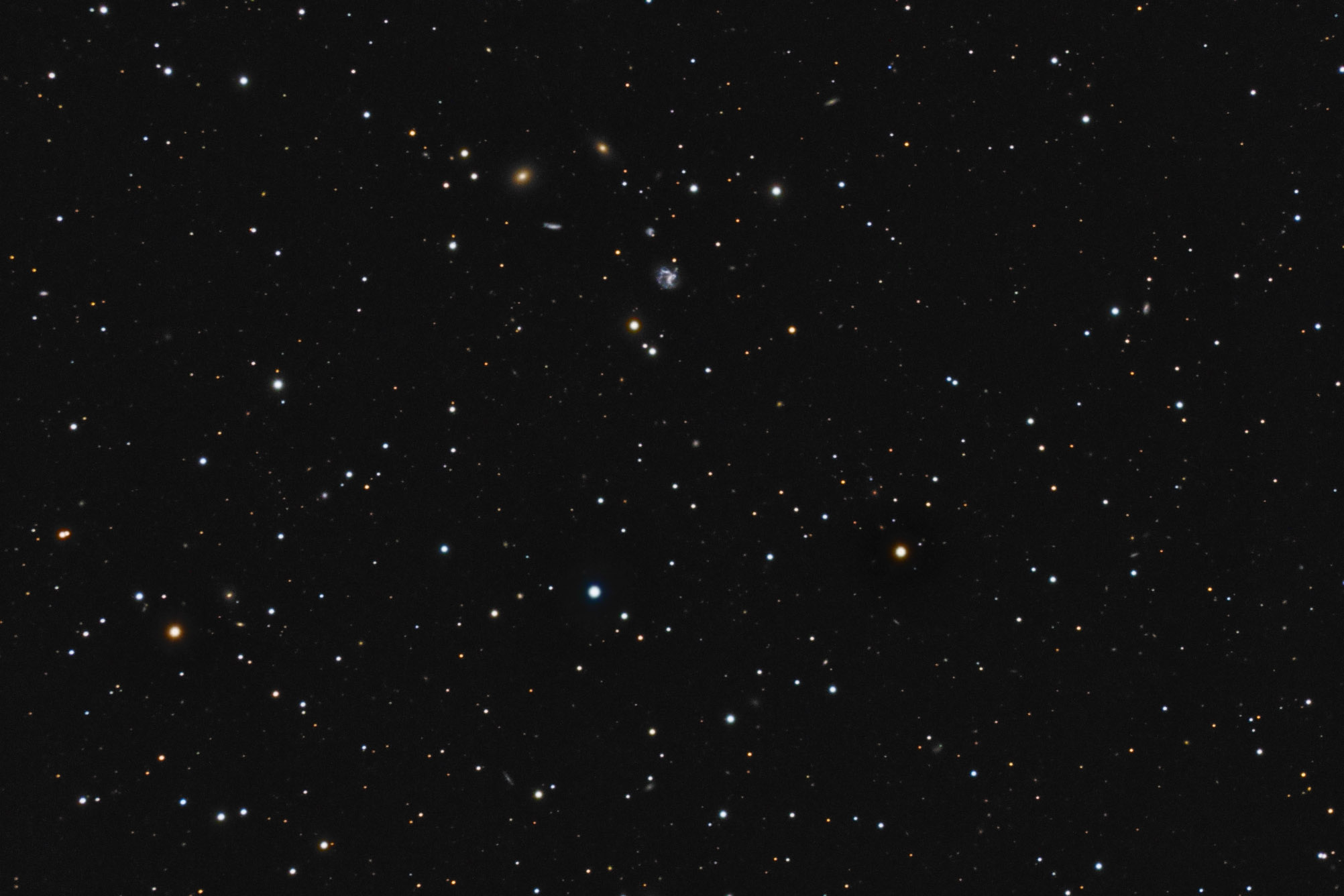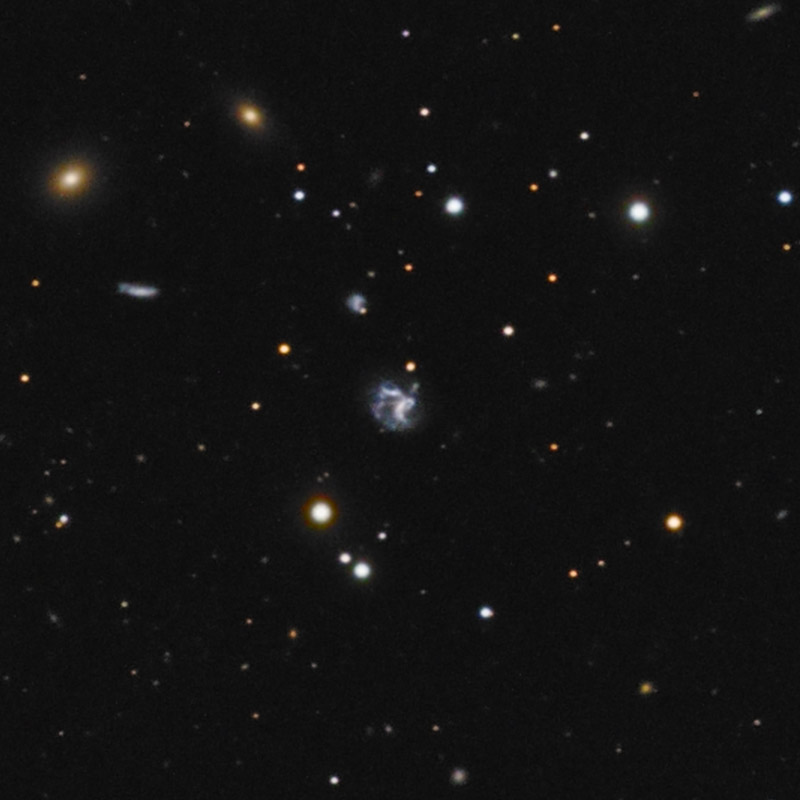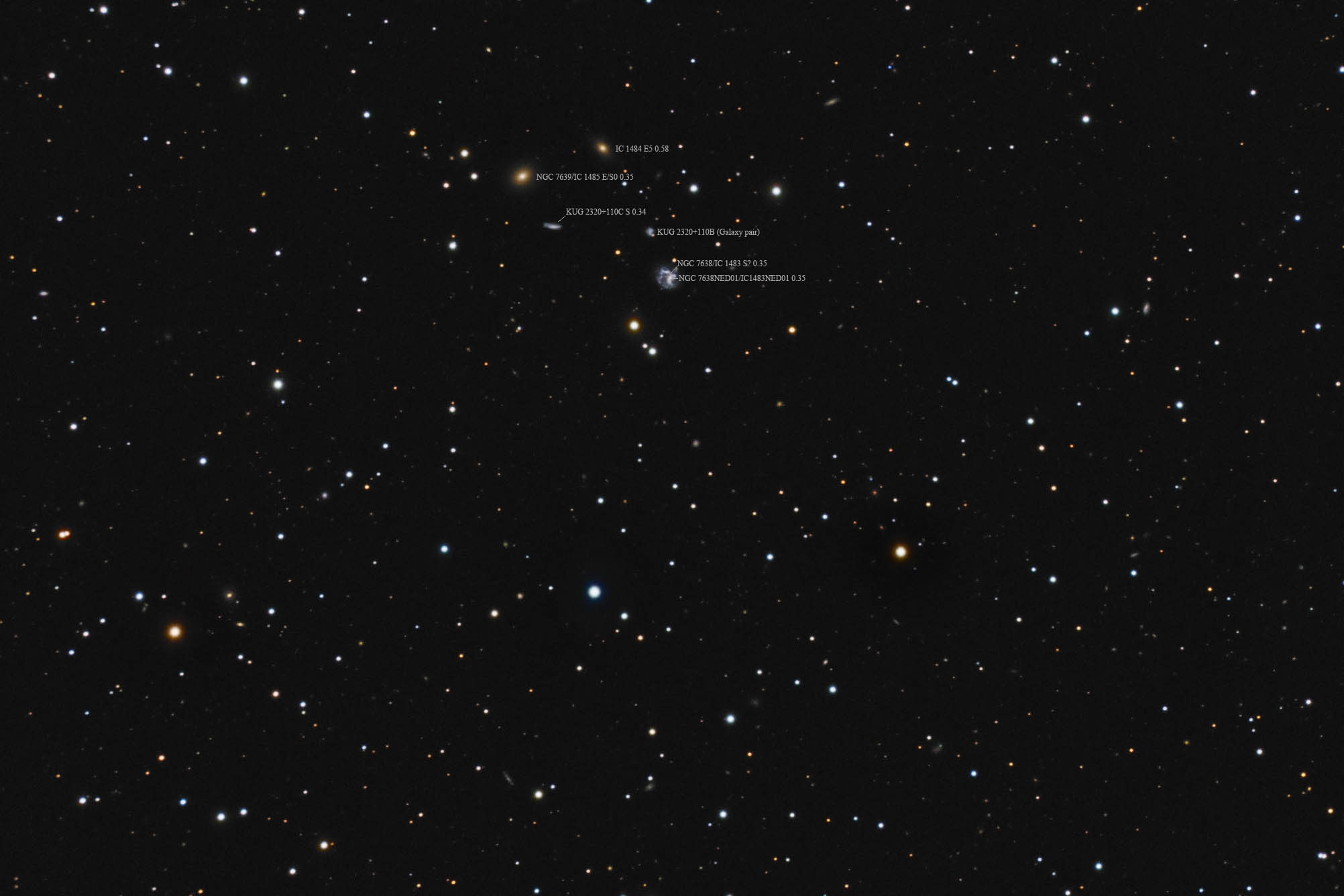| Description | Images |
Object name: NGC7638Designation(s): NGC7638, NGC7639, IC1484, NGC 7638/1483 appears to be a very disrupted spiral galaxy in Pegasus about 350 million light-years distant. It was discovered by Andrew Ainslie Common on August 8, 1880. Unfortunately Common gave no coordinates for this one or NGC 7639 he found the same night. Just a rough estimate of distance and direction from NGC 7630 (out of my frame) Dreyer entered these into the NGC with approximate coordinates. Later Stephane Javelle, on December 2, 1893 found both of these with good coordinates so we know these are what Javelle saw. Not realizing they may be what Common recorded they got a separate listing the IC catalog. Since nothing else is in the area Common would have seen in his scope it is assumed he saw these as well. Since his observations came first to Dreyer's attention they went into the NGC and Javelle's more accurate observations went to the IC without anyone catching on at the time they were likely the same two galaxies. But this is still debated, hence the question marks after their designation in the annotated image. Related Designation(s):2MASS J23223990+1123037, 2MASS J23224820+1122222, 2MASX J23223991+1123035, 2MASX J23224821+1122225, CGCG 2320.0+1104, CGCG 2320.3+1107, CGCG 431-046, CGCG 431-050, GALEXASC J232239.83+112301.9 , GALEXASC J232248.23+112222.5 , IC 1483, IC 1484, IC 1485, IC1484, IRAS 23200+1103, IRAS F23200+1103, KAZ 556, KUG 2320+110A, LEDA 1392792, MCG +02-59-030, MCG +02-59-032, NGC 7638, NGC 7639, NGC7638, NGC7639, NPM1G +11.0569, NPM1G +11.0570, NSA 151276, NSA 151286, PGC 071242, PGC 071256, UZC J232240.0+112304, [GG2000] 232001.80+110319.8, [GG2000] 232008.45+110636.4, [GG2000] 232016.70+110554.2, | Permanent link: https://images.mantrapskies.com/catalog/NGC/NGC7638-NGC7639-IC1484/NGC7638L4X10RGB2X10.JPG |


